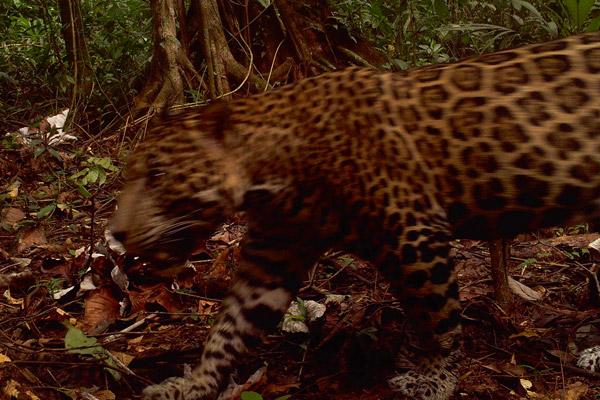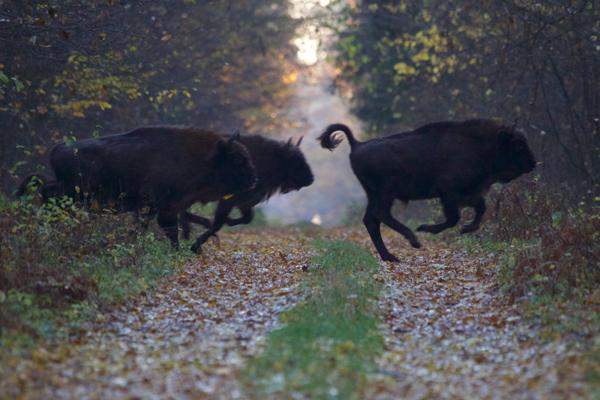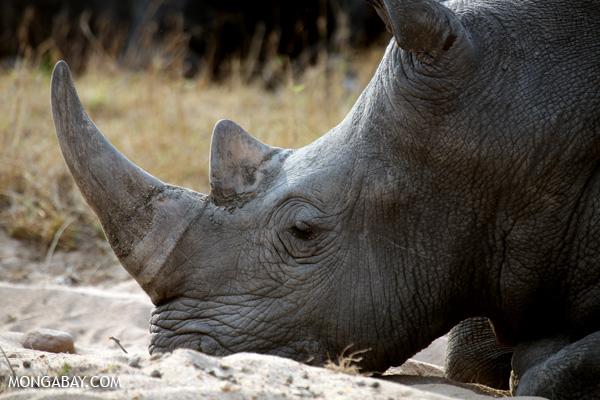A hundred years ago, the Panama Canal reshaped global geography, allowing ships for the first time to bypass the long and perilous journey around Cape Horn by simply cutting through a continent. Now a new project, spearheaded by a media-shy Chinese millionaire, wants to compete with the infamous canal, building a 278-kilometer (173-mile) canal through Nicaragua. While the Nicaraguan government argues the massive project will change the country’s dire economic outlook overnight—Nicaragua is the second poorest country in the Western Hemisphere after Haiti—critics contend it will cause undue environmental damage, upend numerous communities, and do little to help the people of Nicaragua.
“Consider the Panama Canal,” Gerald Urquhart, a tropical ecologist with Michigan State University who’s worked in Nicaragua for 20 years, told mongabay.com. “One-hundred years after its construction, it is seen as a good thing for the people of Panama. However, until the Carter Trujillo Treaty returned the canal to Panama in 1999, the Panama Canal belonged to the United States and was inside of an occupied military zone. Panamanians were only allowed into the Canal Zone with certain credentials and did not benefit economically from the canal. Unfortunately, I see a similar scenario in Nicaragua if the canal is constructed.”
Last month, the proposed route for the Gran Canal was finally announced. If built, the canal will begin on the country’s Caribbean Coast, just south of Bluefields Bay. Moving west, it will cut along the borders of both the Cerro Silva and Punta Gorda Nature Reserves while also skirting the Indio Maíz Biological Reserve before reaching Lake Nicaragua, the largest freshwater lake in Central America. The canal would meet the Pacific at the mouth of the River Brito. In all, this massive canal would be nearly four times longer than the Panama Canal and will cost around least $40 billion, or four times Nicaragua’s current GDP.
A canal for Nicaraguans?
Part of the concern by experts is the fact that the canal is being planned not by Nicaraguans, but by a China-based consortium—the Hong Kong Nicaragua Canal Development Investment Company (HKND Group)—headed by telecommunications businessman, Wang Jing. Last year, Nicaragua’s National Assembly granted HKND a no-bid, 50-year concession for the canal with the chance to renew for another 50 years.
“Little is known about Mr. Wang Jing and his business enterprises. Nor was the granting of this 50 year (plus 50 year renewal) concession presented to the Nicaraguan public for debate prior to approval by the National Assembly,” Jorge Huete-Perez, the founder and director of the Molecular Biology Center at the University of Central America said, adding, “it is safe to say that there is a general feeling of concern, desire for more concrete data, and a need for reassurance that people will be justly remunerated for their expropriated lands, and that our natural resources won’t be destroyed.”
Huete-Perez was a co-author on a recent article in Nature that argued the Gran Canal could lead to “environmental ruin.”
But the Nicaraguan government, including current President Daniel Ortega, is solidly behind the project. They have gone so far as to approve the project before a single environmental assessment was undertaken. Moreover, the government has handed off the environmental assessment to the HKND Group, which has hired a consultancy firm, Environmental Resources Management, to conduct them. HKND has not responded to queries regarding this article.
For the Nicaragua government it’s all about a predicted economic boom. The government has projected that GDP growth will jump from 4.5 percent to 10.8 percent this year entirely due to the Gran Canal—even though the project is not set to break ground until December. And they say it will rise to 15 percent by next year. By 2018, the government says the massive project will lift 400,000 people out of poverty, while employing some 200,000.
Still, not all Nicaraguan politicians view the project as a slam-dunk for the country.
Opposition congressman, Eliseo Nunez, has dubbed the canal “a propaganda game, a media show to continue generating false hopes of future prosperity among Nicaraguans.” Nunez has suggested that the Chinese government is really behind the plan, though that has been repeatedly denied by the HKND Group. To date, the project’s financiers have been kept hidden.
Even aside from who’s ultimately behind financing such a large project, Urquhart believes few Nicaraguans will see benefits in the near-term.
“Because of the technical difficulty of this project, I doubt there are going to be many Nicaraguan engineers and workers employed in the project. The machinery will come from China, the machine operators will come from China, the engineers will come (mostly) from China, and so on. Although $40 billion dollars is expected to be spent on the project, I do not see much of that entering the Nicaraguan economy. Most of it will be Chinese money paid to Chinese workers.”
Not only might the Gran Canal not monetarily benefit the Nicaraguan people in the near-term, but it might worsen living conditions, already destabilized by environmental issues and longstanding conflict.
In fact, according to Huete-Perez, the canal will force the relocation of at least nine indigenous and Afro-Nicarguan communities in Nicaragua’s South Atlantic Autonomous Region. Although the autonomous regions were set-up to provide local communities with greater access and management of their natural resources, this special status doesn’t impact the approval of the Gran Canal.
“This will result in the extinction of some ethnicities starting with their ancestral language, the Rama being a case in point,” Huete-Perez told mongabay.com. “Divided by the canal, the Ramas will cease to exist as a native culture. Furthermore, it would seem that Nicaragua’s indigenous communities lying in the path of [the canal] will soon lose their hard fought and precarious grasp of environmental justice.”
In the end, according to the Huete-Perez, the government has given no real assurance—or proof—that the Gran Canal will actually be good for Nicaraguans.
“The speakers for the canal concessionary have publicly expressed a ‘hope’ that this project will immediately rocket Nicaragua out of poverty and even into double-digit annual economic growth, with abundant training and job opportunities for Nicaraguans,” he said. “But unfortunately they have never shown any data to back these claims, instead they ask for people to have ‘faith.’ But as our history has shown [some] individuals may become wealthy at the expense of the country’s natural resources while the vast majority can only become poorer.”
Biodiversity hotspots along the way
The approved route will slice the massive canal along the borders of two nature reserves—Cerro Silva and Punta Gorda—as well as the Indio Maíz Biological Reserve. These three protected areas are known for their biodiversity, as well as important forest patches for long-ranging and iconic species.
“In these areas, we have found tapirs, jaguars, and other important rainforest species,” said Urquhart. “The forests in which these were found will be wiped out by the construction of the canal, but the overall impact on the populations of these animals is hard to determine.”
Despite being protected areas, Cerro Silva and Punta Gorda have already been hard hit by both legal and illegal occupants, many of them converting the forest into cattle pasture. In fact, data from Global Forest Watch finds that between 2001 and 2013, Punta Gorda Nature Reserve lost 23 percent of its forest cover, while Cerro Silva lost 16 percent.
“Because much of the area has already seen a lot of forest loss, the total forest loss due to canal construction is not going to amount to that much,” noted Urquhart. “The problem is that it will create another disruption in the ‘corridor’ of forests down the Caribbean Coast of Nicaragua. This forest connects larger tracts.”
One larger tract to the south is the Indio Maíz Biological Reserve, which is faring much better than its northern cousins. During the same 12-year period, this protected area only lost less than one percent, equalling 2,726 hectares.
Overall, Nicaragua has lost 822,513 hectares of forest during the last 12 years, an area around the size of Puerto Rico. This means, using 2001 as a benchmark, the country lost over 10 percent of its forest cover in the past dozen years.
If built, the Gran Canal will only add greater pressure to the country’s forest. Huete-Perez says that the canal’s construction could lead to the destruction of “more than 400,000 hectares of forest and wetlands.” This would represent around half of the forest loss over the last 12 years or about 6 percent of the country’s remaining forest.
The region’s ecosystems could also be impacted by dredging. Cutting the canal through the country at over 27 meters deep and between 230-520 meters wide is going to create millions of tons of sediment. Depending on where this is dumped, it’s likely nearby ecosystems will be impacted.
It’s not just the Gran Canal that will be cutting a swathe through Nicaragua, but a whole string of development projects connected to the canal, including an international airport, a railway, two deepwater ports, four tourist resorts, a concrete production plant, an oil pipeline, and a slew of new highways. In addition, it’s likely the project will bring thousands of foreign workers as well as attract many Nicaraguans hungry for a job. With an increase in the population, massive development projects, and likely many new roads, it’s a fair bet the wildlife that does survive in these parks today will have an even more difficult time.
But Nicaragua’s already-embattled forests and wildlife aren’t the only ecosystems threatened by the Gran Canal.
What will happen to Lake Nicaragua?
Given its size and importance, it’s no surprise that Lake Nicaragua has numerous names, including Lago Cocibolca and the descriptive Mar Dulce. Not only is it the largest lake in Central America, but it’s also the region’s biggest freshwater source. Moreover, the lake has a truly bizarre ecology, including a transient population of bull sharks (Carcharhinus leucas) and hugely-endangered sawfish that came from ocean, jumping rapids along the way. The lake is also home to diverse mix of endemic cichlids, well-known in the aquarium trade. However, critics fear that building a massive canal, that will cut directly through this distinct lake, will upend the ecology—bringing with it invasive species and floods of saltwater—while also undercutting a vital freshwater source.
“[The lake] supplies water for Nicaragua’s agricultural and cattle industries as well as livelihood for those living along its shores,” said Huete-Perez “Although the impact studies are not publicly available, from what we can infer, the selected route...did nothing to avoid these problems.”
Because the lake is too shallow for many ocean liner cargo ships, HKND is proposing to dug a 27-meter deep channel through the full-length of the lake, as well as the rivers and earth it will cut before and after. There is no word yet as to where the millions of tons of dredge will be placed, but scientists fear it will eventually end up back in the lake as damaging sediment.
“There certainly will be an increase in pollution on Lake Nicaragua, but how severe is unknown,” said Urquhart.
Moreover, as ship traffic picks up, ecologists are concerned that invasive species will get into the lake, which has already suffered decades of pollution problems and overfishing. In fact, according to Urquhart, the lake’s famous “shark and sawfish populations are already decimated.”
With rivers leading into and out of the lake also widened and deepened, scientists fear an influx of saltwater could change the lake’s makeup, further dooming local fish and the people who depend on them.
Another unknown are the lake’s volcanoes. Two volcanoes, one still active, sit on Ometepe Island which was declared a Biosphere Reserve in 2010.
“Local experts have yet to study possible volcanic activity and the impact on the canal,” said Huete-Perez. “There may be a significant impact of the canal on the twin volcanoes...[Ometepe island] is still pristine and unspoiled, rich in biodiversity and fledgling ecological projects, and home to archeological remains of Nicaragua’s rich pre-colonial history...ships will pass close by the island on the planned canal route that slices through Lake Nicaragua.”
Huete-Perez also warns that the country’s many earthquakes could injure the “canal structure.”
Before choosing the Panama Isthmus for its canal, the U.S. seriously considered building it through Nicaragua. In fact, it even came to a vote in the U.S. Congress, which voted for Panama over Nicaragua in 1902. Politics and instability scared off some U.S. politicians, but the deciding factor against Nicaragua where concerns over earthquakes, and especially, volcanoes. Over a hundred years later and it’s still not clear how a new canal could mitigate against tectonic realities.
Shrouded in secrecy
Despite approval from the Nicaraguan government and a selected route, few details are actually known about the Gran Canal. Until now, no environmental assessment has been completed, let alone made public; the canal’s current funders remain hidden; and the impacts of the canal—both the good and the bad—remain largely unstudied.
“HKND has provided no concrete data to...Nicaraguan experts in engineering, water resource management, environmental conservation, etc., regarding the proposed structure of the canal and related sub-projects, nor have we seen data from the feasibility and environmental assessments that HKND paid for,” said Huete Perez. “This makes it very difficult to form an educated opinion about the magnitude of the impacts.”
Still, HKND is steamrolling ahead: they say they will break ground by December and see its first ship through by 2019. But, even setting aside the legitimate environmental and social concerns, some worry the hugely-ambitious scheme may prove an economic debacle.
Trade expert Jean-Paul Rodrigue told National Public Radio that he believed the government’s projections were exaggerated.
“It’s going to take a lot of traffic and a very, very long time,” he said. “That’s why I say the project is technically feasible but commercially very, very dubious.”
To better understand the decision facing Nicaraguans, Huete Perez and colleagues are planning an International workshop through the country’s Academy of Sciences.
“Discussions will focus on defining major concerns and potential irreversible impacts (and their significance) associated with construction and operation of the canal and its sub-projects; and exploring alternative, sustainable uses for [Lake Nicaragua],” he noted.
Given Nicaragua’s well-published challenges—the drug trade, entrenched poverty, and decades of civil war—it may not be surprising that the government is looking for a big development project (and few, if any, are bigger than this) to transform the country’s fragile outlook overnight. It’s an understandably tempting prospect: approve one big project, and suddenly the country’s decades-old, ingrained problems will right themselves.
“Nicaragua is a country facing incredible difficulties,” said Urquhart. “They face very difficult decisions in considering the canal. There is a need to invest in the country, but I am not sure if this is the best plan.”
Huete-Perez is more blunt, saying that the Gran Canal is a “dishonest and offensive proposal that Nicaragua should not accept.”
This article was originally written and published by Jeremy Hance, a contributing writer for news.mongabay.com. For the original article and more information, please click HERE.





Friends Read Free